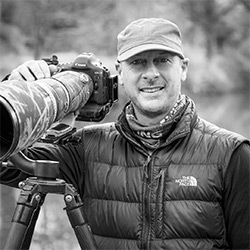 Today I have the pleasure of presenting an interview that comes from the town of Tonbridge in the English county of Kent in the UK. Andrew Sproule is an award-winning Professional Wildlife and Adventure Photographer and Wildlife Photography Tour Leader, who travels extensively to photograph an array of wildlife in the UK and overseas. Andrew follows his passion for animals and has been creating thought-provoking, inspirational wildlife imagery for over 15 years. With a wealth of knowledge, Andrew has the ability to effectively capture and convey his careful observations of the natural world.
Today I have the pleasure of presenting an interview that comes from the town of Tonbridge in the English county of Kent in the UK. Andrew Sproule is an award-winning Professional Wildlife and Adventure Photographer and Wildlife Photography Tour Leader, who travels extensively to photograph an array of wildlife in the UK and overseas. Andrew follows his passion for animals and has been creating thought-provoking, inspirational wildlife imagery for over 15 years. With a wealth of knowledge, Andrew has the ability to effectively capture and convey his careful observations of the natural world.
Thank you, Andrew, for spending the time to share your experiences with us and thank you so much for all your thoughtful responses. Your body of work is truly inspiring.
If you’d like to learn more about Andrew, please visit his website and photo safaris. You can also follow him on Instagram, Facebook and Twitter.
Can you please tell the readers a bit about yourself?
I’m a professional wildlife & adventure photographer and wildlife photo safari tour leader based in the UK.
I’m a born explorer and before turning my hobby into a career, I fuelled my passion for travel and adventure by working as a Creative Director for some of the UK’s top travel brands including Virgin, TUI and Qantas.
Where do you call home?
I live in the historic market town of Tonbridge in Kent in the UK. However, I’m originally from the South West of England, Devon to be exact, and I’m currently planning to return, to where I call home, this year! I’ve tried city living, and it’s just not for me. The countryside beckons!
After browsing through your website, I see that you have built up an extensive collection of wonderful photography. When did you first become interested in photography and how long have you been involved with it?
Thank you so much. Like a lot of photographers, it started as a hobby in my teens with an inexpensive manual film camera. I’ve always been interested in the outdoors and photography offered me the opportunity to capture what I was seeing. The advent of digital cameras and the digital darkroom though were crucial, as they provided me with the means to experiment and develop my own style.
Are you formally-taught or self-taught?
I’m a selfie! I believe that the years of in-the-field and on-location experience have given me an invaluable and comprehensive understanding of lighting, weather and of animal behaviour. It’s that same old adage – you just need to get out there and practise, practise, practise, and I’m still learning!
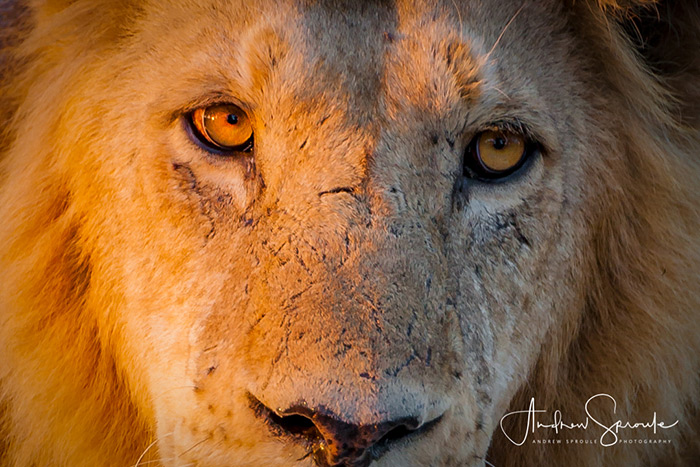
A male lion portrait from the Moremi Game Reserve in Botswana
Are you satisfied with your choice of getting involved with this industry? Is there anything else you would rather be doing?
Totally satisfied. There’s nothing else I would rather be doing. I love to build awareness and educate through photography and through my photo safari tour leading I’m able to share knowledge and offer guidance and support to like-minded individuals, which is extremely rewarding and immensely satisfying.

Elephants in the Kruger National Park in South Africa
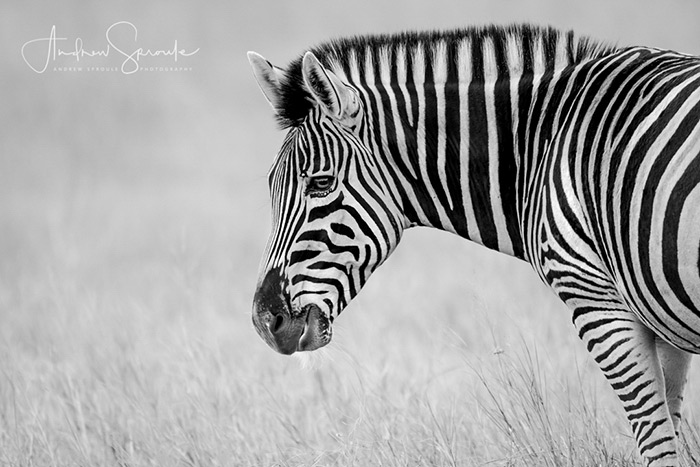
A male plains zebra in the Okavango Delta in Botswana
What is your favorite part of heading out to a new location?
I actually love the uncertainty. When I’m in a new location, whether it’s in Africa or the UK, there’s a nervous excitement that’s almost tangible. It stems from the anticipation of what I might encounter and how I’m going to handle it photographically.
Location and weather conditions seem to be a crucial aspect of a successful photograph. How do you handle these unpredictable factors?
Just like wildlife, the weather is unpredictable. So I tend to go with the flow and don’t rely too heavily on weather forecasts. That said some local knowledge and observation should ensure you’re always prepared. Safety first obviously but if you can wait out a storm, for example, the build-up and the aftermath can be extremely rewarding. Think cheetah in the rain, angry clouds behind a herd of elephant, wind blown lion’s mane etc. These moments are fleeting – and, you’ve got to be in it to win it.
When shooting subjects, what do you find most challenging?
Finding a new take on a familiar subject is probably the most challenging aspect but it’s also the most rewarding. Thankfully, nature is full of unexpected surprises and often lends a hand in the creation of something different.
Getting into position so that I’m eye-level or lower with my subject can sometimes be a challenge. If I’m unable to physically get myself into position I’ll improvise to make sure the camera is. Resorting to blind-shooting on occasion, with some interesting results!
Another challenge is not so much with the subject itself, but what’s happening around about. When I compose a shot I pay a lot of attention to the background and foreground for any distractions. It’s all too easy to get caught up in the moment and not spot a tree coming out of the top of a lion’s head! Once spotted, a little shift up, down, left or right can often eradicate the problem.
I also try and look at the bigger picture. Would the scene make a better “animal in its environment” shot for example? Having a second camera to hand with a wide-angle lens for instance allows me a greater degree of flexibility.
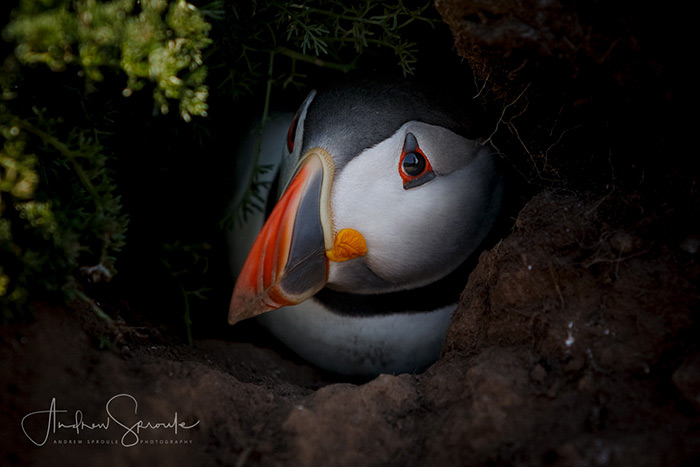
A puffin in a burrow on Skomer Island in Wales
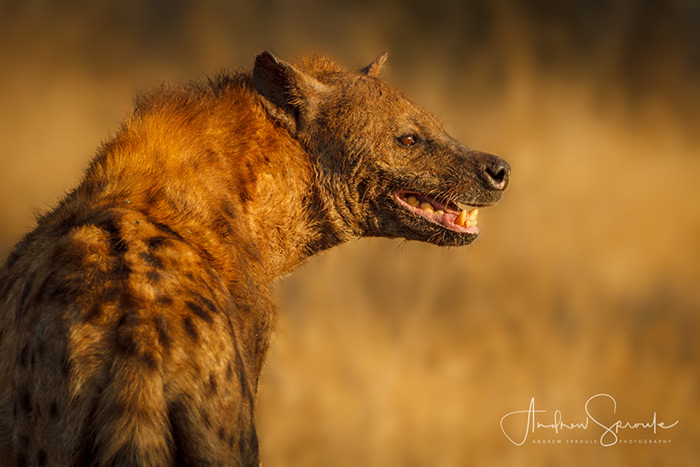
An adult spotted hyena in Timbavati in South Africa
What is your favorite and least favorite part of owning your own photography business?
Being my own boss and managing my own time is great and I even enjoy the marketing, sales, financial, social media and PR aspects. The downside is when you’re not working, you’re not earning and the peaks and troughs can be extreme.
If there was one thing you would want prospective clients to know about you, what would it be?
That I’m a skilled coach and committed to making sure clients return home with images that they will be really pleased with and that they always leave a more accomplished wildlife photographer than when they first arrived.
What’s the best part of being a photographer?
I never get bored. It doesn’t matter how many times I’ve been to the same location or photographed the same subject, UK or overseas – I continue to get a buzz out of it, as no two situations are ever the same. If it’s a new location and or an unfamiliar subject then that excitement is only heightened.
And, I still get an enormous thrill out of seeing my work in print, especially if it’s large format and taking pride of place in a client’s home or place of work. When images are not only visual, but also tangible, they’re taken to the next level.

A gannet landing on Campion Bempton Cliffs in the UK
Share with us your favorite image and why.
Hmm. That’s a toughie as I have a number of favourites, each with its own story to tell, however, there is one image that springs to mind. It’s a photograph of Noor, a beautiful female Bengal Tiger, affectionately known locally as “the queen of Ranthambhore.”
Technically, it’s not even great image, it’s just the sense of vulnerability I felt when she [Noor] just stopped mid-walk and stared right down the barrel of my 500mm. It was the first time that I actually respected just how exposed and defenseless I was in my small Maruti Gypsy jeep. She stood motionless for what seemed an eternity before her attention was diverted away by the bark of a Chital Deer nearby and she turned and disappeared into the jungle, leaving me with my heart pounding out of my chest.
I look at that shot now and I’m convinced that she’s plotting something!!
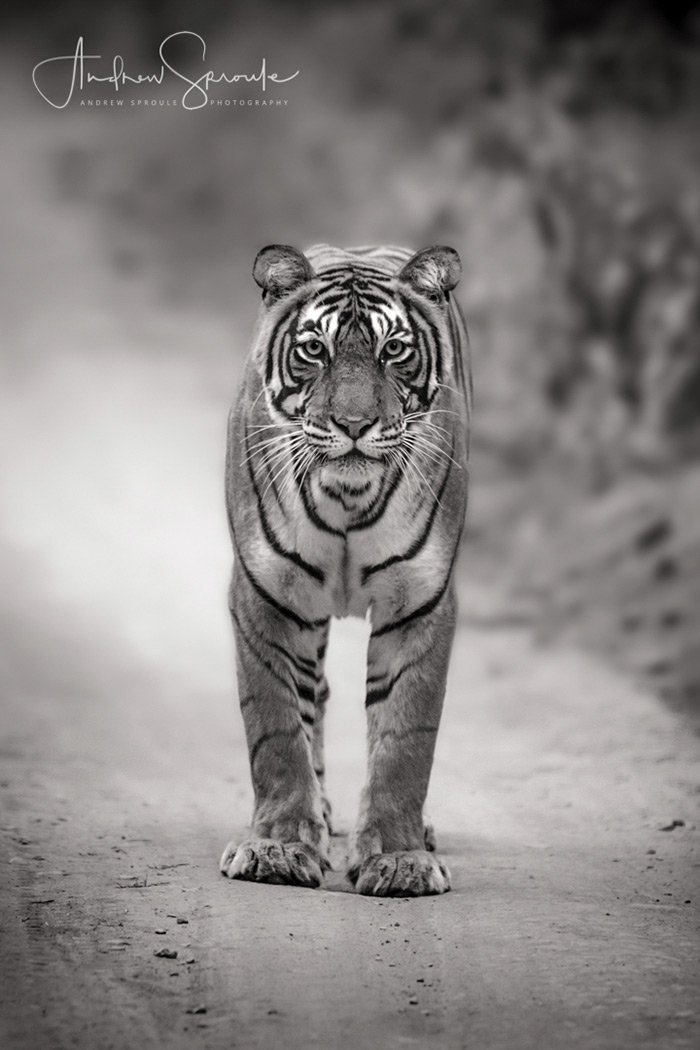
A royal Bengal tiger, Noor, at the Ranthambhore Tiger Reserve in India
How do you keep your photography fresh and how do you stay motivated to keep on learning?
I was one of those really annoying kids that was always asking “how”, “why”, “when” and that’s never really left me, much to the annoyance of those around me! There’s so much of the world I haven’t seen and there’s now so much resource on tap that I don’t even see it as a chore to have the desire to experience more and to want to better myself.
I look back at some of my archived imagery and realise that I’ve come a long way and I also look forward and see the amazing work being produced by some my compatriots and recognise that I’m still very much on the journey.
What has been the best source of information along your photography journey (workshop, online forums, classroom, mentor, etc)?
I’ve had the pleasure of meeting and learning from some amazingly talented photographers over the years and one thing they all have in common is their openness and willingness to share what they know and what they’ve learnt. Sometimes this is directly and in person and sometimes it’s via their blogs or other social outlets.
Primarily though, they all appreciate the fact that they too were once starting out and needed as much help as they could get.
The key here though is to take those little gems of information and put them towards developing your own unique style and don’t compare yourself to others. You’ll no doubt find out that you are your own worst critic and this will push you forward to try and be different and more creative and motivate you to develop new skills.
What is one piece of advice you would like to offer a new photographer just starting out?
Whatever camera you’re using, get to know it intimately. Nature’s special moments are often fleeting, so your camera needs to become an extension of yourself. Learning to adjust settings while continuing to look through the viewfinder, for instance, should become second nature, leaving you to concentrate on being creative with what’s happening in front of you.
What type of camera(s) do you shoot with? What is your favorite lens?
I use two Canon EOS cameras – the 1DX and the 5D3 with lenses ranging from a 15mm fisheye right through to 500mm. I love my Canon 500mm f/4L as it’s a real workhorse and has never let me down.
However, taking a leaf from some of my adventure photography, I’m now integrating my Canon 24-70mm f/2.8L II and Canon 16-35mm f/4L IS USM into my wildlife photography a lot more for low level wide-angle shots. I love presenting wildlife in its environment but if the subject is really close (and I mean almost touching distance) then these lenses can provide an extraordinary level of intimacy.
What is in your camera bag?
It really depends on the gig. Lame I know, but I will always want to keep weight to a minimum and only carry the most suitable equipment for the task in hand. One thing I always do is travel with both camera bodies, not just as a backup, but to avoid swapping lenses in dusty and or inhospitable environments.
What is your favorite photography accessory?
I often use a ball head or gimbal head on a Manfrotto® Superclamp. It’s a relatively simple but extremely useful accessory that can be bolted almost anywhere including a vehicle’s roof bars. If I’m on my own or part of a very small group, I may even have several of these clamps placed in strategic points around the vehicle making it extremely easy to switch from side to side and back to front.
How important is Photoshop or other image editing software in your final images?
I use both Adobe Lightroom and Photoshop and they’re integral to my whole workflow process, not just post trip but also while on location. For me, it’s important to be able to think ahead a bit about how you might process certain images.
If you fully understand the key features (and also the limitations) of your preferred editing software, you’ll be better placed to make on-the-spot camera setting decisions while shooting, especially useful in low-light or awkward lighting situations.
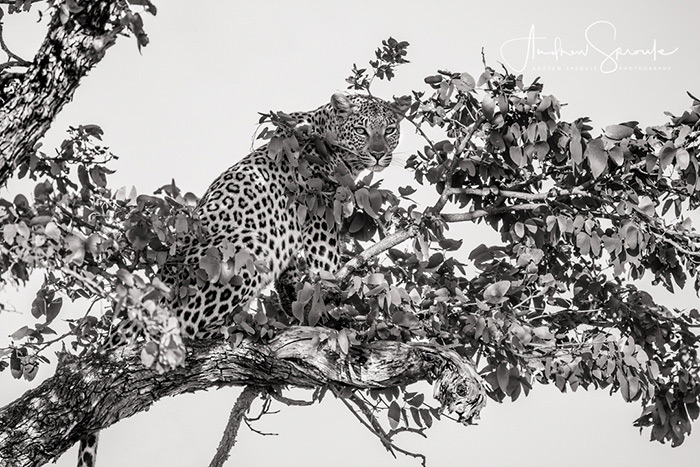
A female leopard in the Moremi Okavango Delta in Botswana
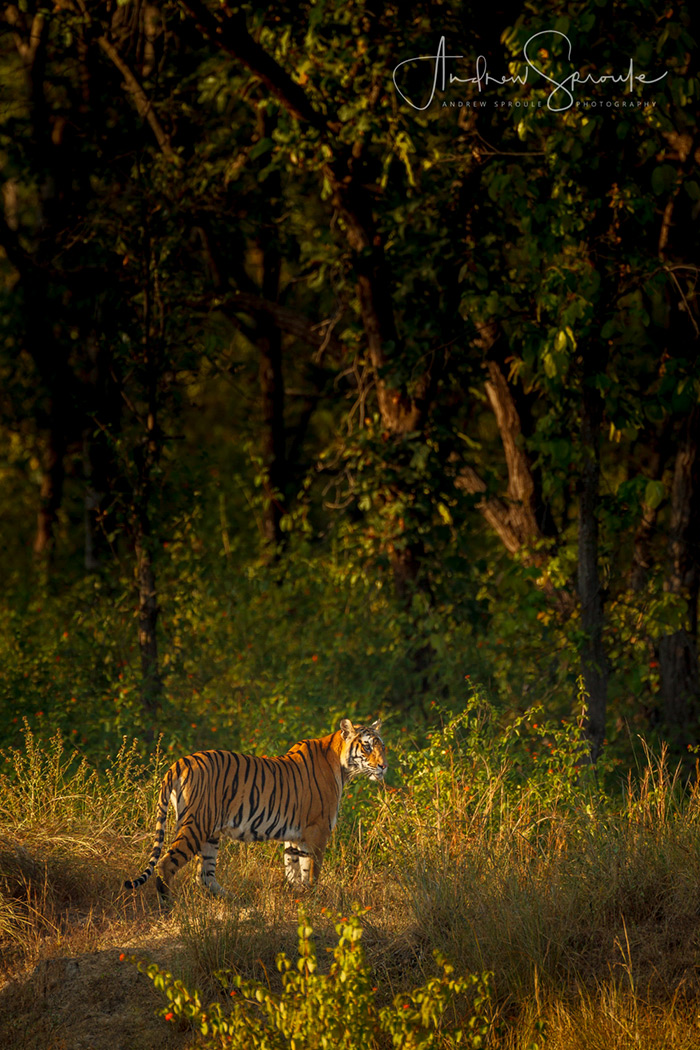
A female royal Bengal tiger in Bandhavgarh in India
Are there any areas of photography that you have yet to pick up on that you’d like to learn?
I’ve been trialing drones and remote-controlled vehicles as I’m fascinated by the unique perspectives and creative opportunities that, would ordinarily, not be possible.
This dovetails nicely into another area that I’m keen to develop further and that’s video. I’ve dabbled, but it’s now time to take it to the next level. It’s becoming increasingly important in my capacity as a tour leader to be able to document and even stream live video while on location.
What do you think the future holds for you? Where do you see yourself in the next few years?
Coaching, mentoring and educating through photography, is key to what motivates me so I see my tour leader role with partner Wild Images continue to flourish and become a major, if not my main, focus in the future.
Leave a Reply